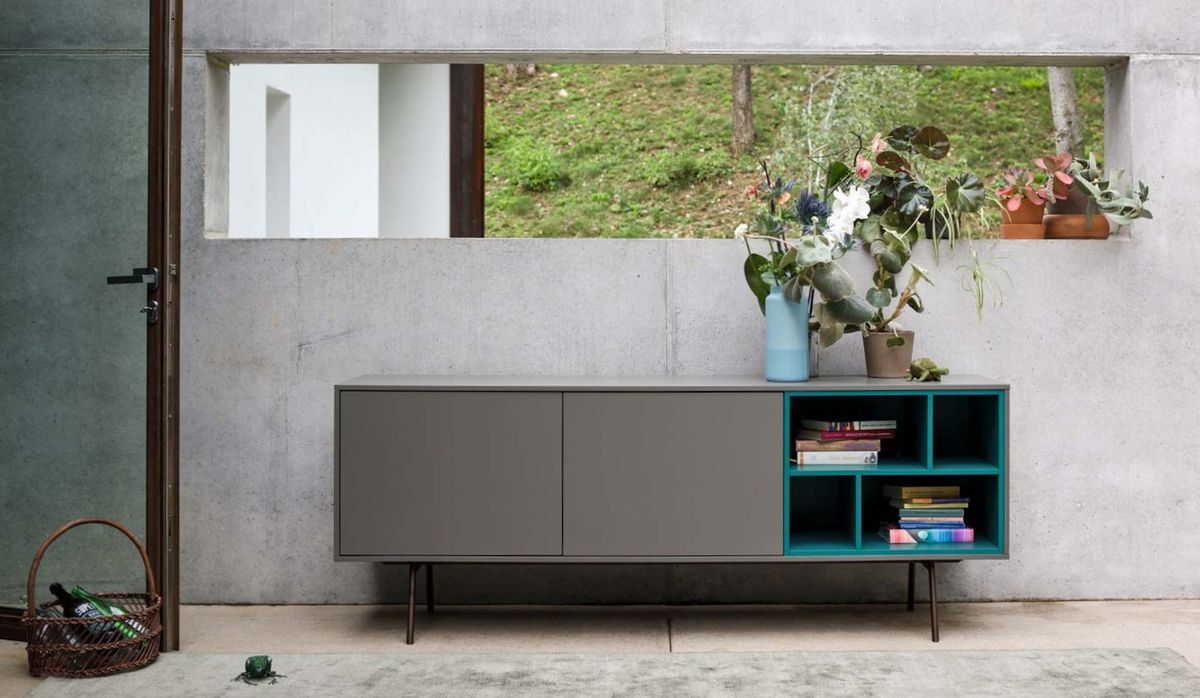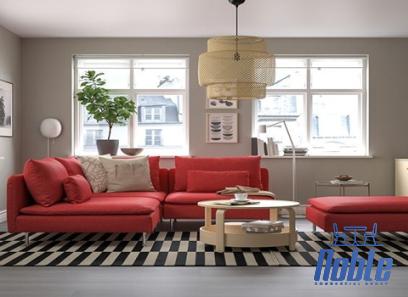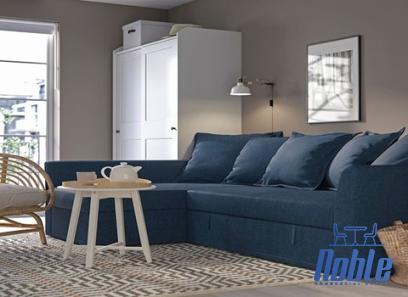The dining sideboards and buffets room are one of the most elegant and eye-catching rooms in the house. Their prices are so economical when they are for sale. It’s a place where families can gather for a meal, invite friends and family for holiday dinners, and display a prized collection of antique dinnerware. Consider to add a sideboard to your dining room if you want to enhance the look of your room or add functional storage and display space. Installing a sideboard in the dining room has many benefits and can be a profitable investment for your home. First, what is a sideboard? A sideboard, more commonly known as a buffet, is a freestanding piece of furniture in a kitchen or dining room. Its distribution usually includes a set of cabinets and drawers in which food, dishes, and decorations are placed. There is a wooden top board to put items. It is an elegant piece called a buffet because it is used in the dining room. If you put the same thing in your entryway or living room, you’d probably call it a sideboard, a console, or just a closet. Traditionally, sideboards were intended for use in separate, formal dining rooms but are now regularly used in kitchens and living rooms and sometimes in bedrooms and hallways. Consider the features and shapes you want in your sideboard before you buy. Whether it’s how often you entertain or what you need to store, it’s essential to choose the right shape and style to fit your space and needs.  A bold statement in the room. It’s an attractive way to get out of the way. Whether for a large, formal dining room, an intimate private dining room, or an open-plan living room, kitchen, and dining room, a sideboard or buffet is an excellent investment in furniture. What is a sideboard? Even before cabinets were in place, dressers were a staple of home decor. Sideboards emerged in England during the 18th and 19th centuries as a popular dining room piece of furniture in wealthy homes. During this time, the family prospered and even dedicated a room to meals. They were often decorations used to store everyday items rather than serving dishes on their own. English sideboards were traditionally placed on the back wall of the dining room at waist height. What is the difference between a sideboard and a buffet? These terms are sometimes used interchangeably, but each has some distinct aspects. The only real difference between a sideboard and a buffet is the room in which they are traditionally located. The sideboard is historically situated in the living room, while the buffet is located in the dining room. Consider item construction and materials when looking for the ideal sideboard or buffet. Although hardwood is the most popular, you can find dressers made from just about any material imaginable. In this sense, there are many reasons to appreciate wood. Natural beauty, grain changes, excellent aging, and the variety of finishes that can be applied to wood are just a few. Not to mention, with proper care, solid Amish furniture can last for generations. Materials can also add decorative elements. For example, choosing a unit with glass doors will brighten the space, while metal hardware can add a contemporary touch. We all have different tastes and needs, so the most important thing is that the material you choose is of high quality and looks great where you want it. Form and function, Then consider which features are the most important. If you always need extra storage space, a sideboard is a perfect solution. The top drawers of these tables are often specially designed to store small and sometimes delicate cutlery and decorative items, while the large cabinets provide a safe and discreet place to store crockery and other things. Display collectible plates, family photos, or precious decorations.
A bold statement in the room. It’s an attractive way to get out of the way. Whether for a large, formal dining room, an intimate private dining room, or an open-plan living room, kitchen, and dining room, a sideboard or buffet is an excellent investment in furniture. What is a sideboard? Even before cabinets were in place, dressers were a staple of home decor. Sideboards emerged in England during the 18th and 19th centuries as a popular dining room piece of furniture in wealthy homes. During this time, the family prospered and even dedicated a room to meals. They were often decorations used to store everyday items rather than serving dishes on their own. English sideboards were traditionally placed on the back wall of the dining room at waist height. What is the difference between a sideboard and a buffet? These terms are sometimes used interchangeably, but each has some distinct aspects. The only real difference between a sideboard and a buffet is the room in which they are traditionally located. The sideboard is historically situated in the living room, while the buffet is located in the dining room. Consider item construction and materials when looking for the ideal sideboard or buffet. Although hardwood is the most popular, you can find dressers made from just about any material imaginable. In this sense, there are many reasons to appreciate wood. Natural beauty, grain changes, excellent aging, and the variety of finishes that can be applied to wood are just a few. Not to mention, with proper care, solid Amish furniture can last for generations. Materials can also add decorative elements. For example, choosing a unit with glass doors will brighten the space, while metal hardware can add a contemporary touch. We all have different tastes and needs, so the most important thing is that the material you choose is of high quality and looks great where you want it. Form and function, Then consider which features are the most important. If you always need extra storage space, a sideboard is a perfect solution. The top drawers of these tables are often specially designed to store small and sometimes delicate cutlery and decorative items, while the large cabinets provide a safe and discreet place to store crockery and other things. Display collectible plates, family photos, or precious decorations.
Why do you need this sideboard? When looking for dining room storage, use your storage needs and decorative preferences to help you choose the best pieces. Consider details such as whether you want closed storage or open storage (cabinets, shelves, etc.). Cabinets can hide clutter, and frames can keep items close at hand or display decorative items. Open shelves are light and friendly, but if you have a lot of eating essentials, it’s helpful in closed cabinets. If you have no other option, you can always use glass cabinet doors. This piece can be used to hold plates and serving utensils when not in use or for general storage. If you don’t care too much about providing space, you can always use the surface to display plants, artwork, photos, and any other decorations you want to show in gorgeous style. Style considerations Buffets and sideboards can match your dining room set and decor, or they can be radically styled for a more modern and eclectic look. Even if your dining set doesn’t come with a buffet or sideboard, you can still find similar styles, even if they don’t match perfectly. Or, especially if you’re looking to modernize a traditional dining room, consider opting for a painted buffet or sideboard to add bright, contrasting color to any dining room style.  Because you like it, What features do you use most often? Any useful special features? Which style element do you like the most? Will it complement your existing decor? What is your style? Lastly, style. Look for pieces that go perfectly with your home. Sideboards and buffets are traditionally quite formal, but with all the contemporary design options, this doesn’t have to be the rule. There are endless layouts and configurations, so list personal preferences. Your unique style and decorating preferences will help you decide which type is right for you. Traditional: For classic homes that don’t need a complete overhaul every time home decor trends change, traditional sideboards are the way to go. Heavy wood, detailed carvings, and a more formal feel make these sideboards ideal. Contemporary – This type of credenza is ideal for offices with a modern interior design. It often has a simple look and can be used to blend effectively with other trends in office furniture. Rustic – If your dining room or living room has a rugged, natural feel, try a rustic sideboard. In this style, you can replace the ruffles with raw wood in neutral colors and add natural or additional finishing. The aged finish gives it a unique charm. Farmhouse – If your dining room is reminiscent of a warm farmhouse or cottage, consider a farmhouse sideboard or buffet.
Because you like it, What features do you use most often? Any useful special features? Which style element do you like the most? Will it complement your existing decor? What is your style? Lastly, style. Look for pieces that go perfectly with your home. Sideboards and buffets are traditionally quite formal, but with all the contemporary design options, this doesn’t have to be the rule. There are endless layouts and configurations, so list personal preferences. Your unique style and decorating preferences will help you decide which type is right for you. Traditional: For classic homes that don’t need a complete overhaul every time home decor trends change, traditional sideboards are the way to go. Heavy wood, detailed carvings, and a more formal feel make these sideboards ideal. Contemporary – This type of credenza is ideal for offices with a modern interior design. It often has a simple look and can be used to blend effectively with other trends in office furniture. Rustic – If your dining room or living room has a rugged, natural feel, try a rustic sideboard. In this style, you can replace the ruffles with raw wood in neutral colors and add natural or additional finishing. The aged finish gives it a unique charm. Farmhouse – If your dining room is reminiscent of a warm farmhouse or cottage, consider a farmhouse sideboard or buffet.










Your comment submitted.